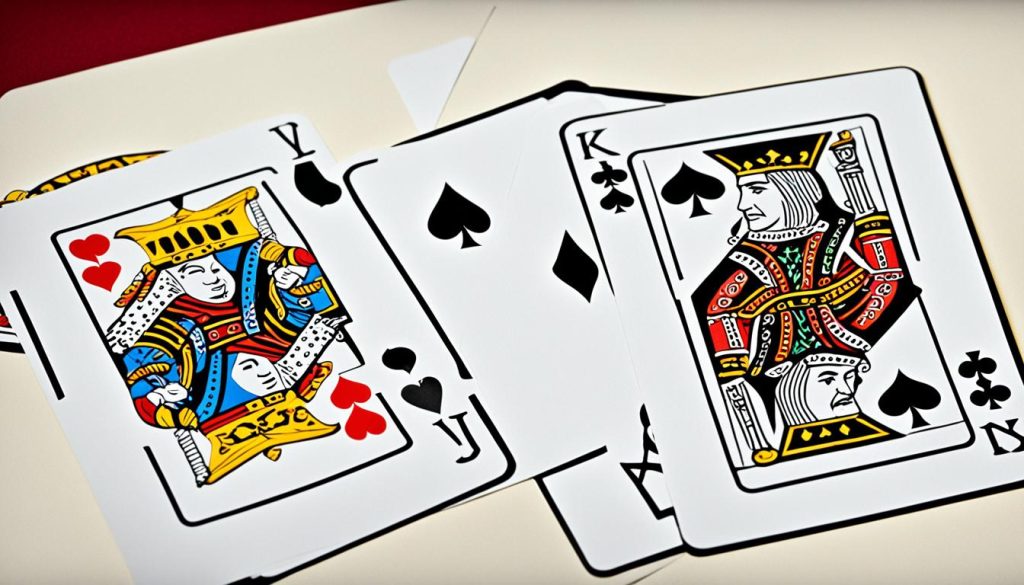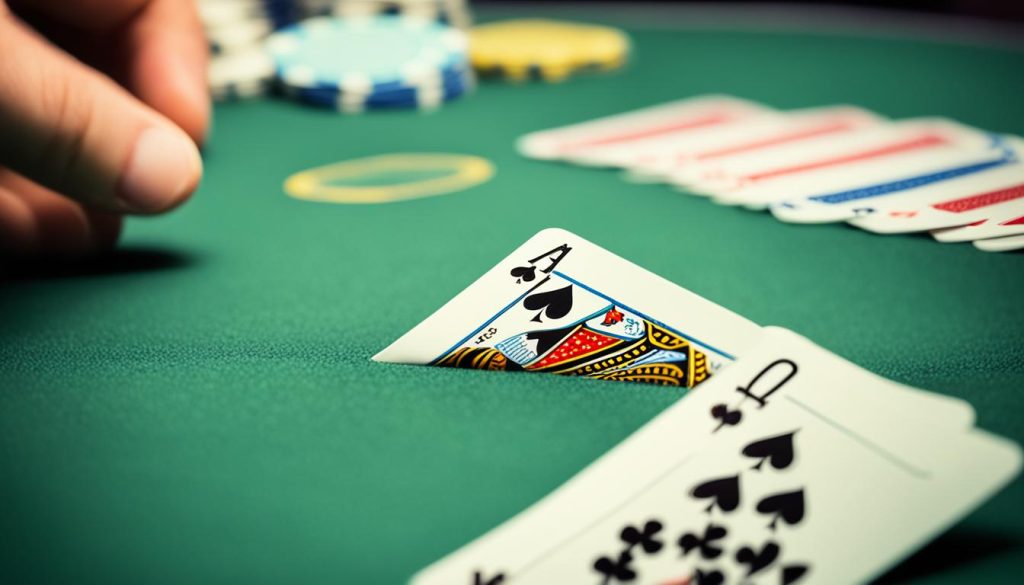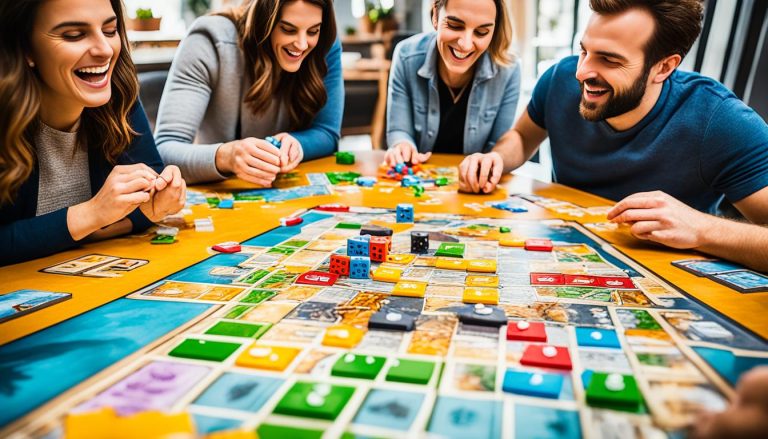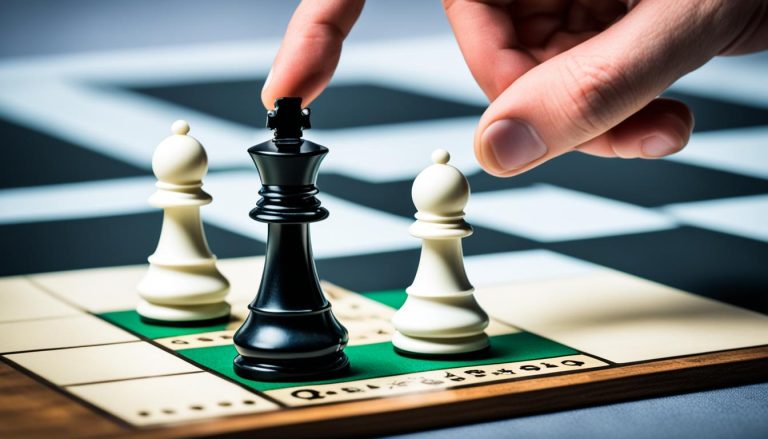Welcome to our comprehensive blackjack or 21 card game guide, where we will teach you how to play blackjack, understand the rules, develop effective strategies, and unlock the secrets to success in one of the most popular casino games. Whether you’re a beginner looking to grasp the basics or a seasoned player looking to enhance your skills, this blackjack guide is your key to becoming a pro.
Let’s dive into the essential blackjack rules, explore various strategies, and discover valuable tips that will elevate your gameplay. From mastering seat positions to making informed decisions on when to hit or stand, we’ve got you covered. Along the way, we’ll provide expert insights and exclusive techniques to maximize your chances of winning.
So, get ready to sharpen your blackjack skills, enhance your knowledge of the game, and embark on a thrilling journey towards blackjack mastery. Let’s begin your blackjack adventure!
How to Play Blackjack?
Blackjack is also called as 21 card game. Playing Blackjack is a classic card game that involves strategy and luck. Here’s a guide on how to play Blackjack:
The objective of the Blackjack
The goal of the game is to have a hand value closer to 21 than the dealer without exceeding 21.
How to Setup the Blackjack Game?
- A standard deck of 52 cards is used.
- Each player, including the dealer, is dealt two cards. Players get both cards face up, while the dealer gets one card face up and one face down
Blackjack Gameplay
- Players take turns deciding whether to “hit” (take another card) or “stand” (keep their current hand).
- Players can continue hitting until they are satisfied with their hand or until they bust (exceed 21 points).
- Once all players have completed their turns, the dealer reveals their face-down card.
- The dealer must hit until reaching a hand value of at least 17.
- If the dealer busts or the player has a hand value closer to 21, the player wins.
How to Win in Blackjack?
- If a player’s hand is closer to 21 than the dealer without busting, the player wins.
- If the player and dealer have the same hand value, it results in a push (tie).
The Importance of Seat Position in Blackjack
In a game of blackjack, the seat position you choose can significantly impact your level of control and decision-making. It is essential to understand the importance of seat position and how it can improve your overall blackjack strategy.
Sitting at the last box, also known as third base, provides a strategic advantage. By occupying this seat, you have the opportunity to observe and analyze the cards that have already been played. This information allows you to make more informed decisions based on the current state of the deck. Furthermore, sitting at the last box enables you to follow the basic strategy effectively, ensuring that you maximize your chances of winning.
However, the first box or the middle seat can also offer strategic advantages in blackjack. These positions allow you to observe the actions of the other players before making your own decisions. By carefully studying their moves, you can gain valuable insights into the direction of the game, enabling you to adjust your own strategy accordingly.
Understanding seat position in blackjack gives you the power to make informed decisions and exercise control over the game. It enhances your ability to follow basic strategy and adapt to the current state of the deck. By strategically choosing your seat, you can significantly improve your chances of winning.
To further illustrate the impact of seat position in blackjack, here is a table comparing the advantages and disadvantages of each seat:
| Seat Position | Advantages | Disadvantages |
|---|---|---|
| Last Box (Third Base) | Control over game flow Ability to follow basic strategy Valuable insight into the deck |
Increased pressure as final decision-maker Limited view of other players’ cards |
| First Box | Observation of other players’ moves Opportunity to adjust strategy accordingly |
Less time to analyze the deck Greater risk of receiving unfavorable cards |
| Middle Seat | Observation of other players’ moves Flexibility to adjust strategy |
Limited control over game flow Moderate risk due to incomplete information |

Mastering the Art of Drawing Cards in Blackjack
Drawing cards in blackjack is a crucial aspect of the game. Knowing when to hit (draw a card) and when to stand (not draw a card) can greatly affect your chances of winning. If the dealer has a low card, it may be beneficial to let them draw high cards and potentially go over 21, known as busting. On the other hand, if the dealer has a high card, it is important to be more cautious with the cards you draw. Understanding the probabilities and making strategic decisions based on the dealer’s card can improve your overall gameplay.
When it comes to drawing cards in blackjack, there are a few key factors to consider. First, you need to assess the dealer’s card. This gives you valuable information that can help you make an informed decision. If the dealer has a low-value card, such as a 2, 3, 4, 5, or 6, they are more likely to bust (exceed a hand value of 21). In this scenario, it can be advantageous to let the dealer draw additional cards, increasing the chances of them going over 21 and resulting in a win for you.
On the other hand, if the dealer has a high-value card, such as a 10, face card, or Ace, they have a stronger starting hand. In this case, you need to be more cautious with your own card choices. The risk of the dealer busting decreases, so it may be wise to stand with a lower hand value to minimize the chances of going over 21 yourself.
Understanding the probabilities is also crucial in drawing cards. For example, if you have a hand value of 12 or higher, there’s a higher likelihood of busting if you draw another card. However, if you have a hand value of 11 or lower, there’s a lower risk of busting, making it safer to draw another card.
To further enhance your understanding and decision-making in drawing cards, familiarize yourself with basic blackjack strategy. This comprehensive strategy takes into account your own card value, the dealer’s card, and specific rules of the game. It provides guidance on whether to hit or stand in different scenarios, optimizing your chances of winning.
Here’s a simple table to illustrate the basic strategy for drawing cards in blackjack:
| Your Hand | Dealer’s Card | Hit or Stand? |
|---|---|---|
| 5-8 | Any | Hit |
| 9 | 2-6 | Double Down (if allowed), otherwise Hit |
| 9 | 7-10, Ace | Stand |
| 10 or 11 | Any | Double Down (if allowed), otherwise Hit |
| 12-16 | 2-6 | Stand |
| 12-16 | 7-10, Ace | Hit |
| 17 or higher | Any | Stand |
By following the basic strategy, you can make more informed decisions when drawing cards, optimizing your chances of winning and minimizing potential losses. Remember to practice and familiarize yourself with both the strategy and the probabilities to improve your overall gameplay in blackjack.
The Strategy of Splits in Blackjack
Splitting is an important strategy in blackjack that can increase your chances of winning. When playing blackjack, it is recommended to always split aces. By splitting a pair of aces, you have the opportunity to create two hands featuring strong starting cards, which significantly improves your odds. It’s a move that no experienced player would ever pass up.
When it comes to other pairs, such as twos, it’s generally not advisable to split. While splitting can be advantageous in certain situations, it’s important to evaluate the dealer’s card and consider the basic strategy before making a decision. In most cases, following the basic strategy will guide you in making better decisions and potentially winning more in blackjack.
Basic Strategy for Splits in Blackjack
Here is a basic strategy chart that can help you determine when to split and when to stay in blackjack:
| Player’s Hand | Dealer’s Up Card | Action |
|---|---|---|
| Ace and Ace | 2-10 | Split |
| 2 and 2 | 2-7 | Split |
| 3 and 3 | 2-7 | Split |
| … | … | … |
By referring to this chart, you can make informed decisions based on the specific pair you have and the dealer’s up card. It’s crucial to remember that splitting should not be done blindly but rather based on strategic insights.
In Las Vegas casinos, splitting aces is a strategy commonly used to maximize winnings. By capitalizing on the potential of two hands featuring strong starting cards, players can significantly increase their advantage over the dealer. It’s a technique that can be highly rewarding when executed correctly.
Now that you understand the strategy of splits in blackjack, you can incorporate this technique into your gameplay and increase your chances of coming out on top.

The Power of Doubling Down in Blackjack
Doubling down is a strategic move in blackjack that can significantly enhance your chances of winning. By doubling your bet and receiving one additional card, you can take advantage of favorable situations and increase your potential winnings.
One of the best times to double down is when you have a hand with a total of 9, 10, or 11. In these situations, there’s a higher likelihood of drawing a card that will put you in a strong position against the dealer. It’s especially advantageous to double down when the dealer has a low card, as they are more likely to bust. Doubling down in these circumstances allows you to capitalize on their vulnerability and potentially secure a rewarding victory.
Additionally, doubling down on “soft hands” (hands that contain an Ace) can be particularly beneficial. When you have a soft hand and the dealer’s face-up card is a 6, doubling down increases your chances of ending up with a high-value hand that can beat the dealer’s total.
Doubling Down Strategy
To make the most out of doubling down, follow these strategic guidelines:
- Double down on hands with a total of 9, 10, or 11.
- Double down when the dealer has a low card (2 to 6).
- Double down on soft hands (hands containing an Ace) when the dealer’s face-up card is a 6.
By understanding the probabilities and taking advantage of favorable situations, doubling down can significantly increase your winnings and give you a stronger edge against the house. However, it’s important to note that doubling down is not always the best option and should be used strategically based on the specific circumstances of the game.

| Hand Total | Dealer’s Card | Recommended Action |
|---|---|---|
| 9, 10, or 11 | 2 to 6 | Double Down |
| Soft Hand (with an Ace) | 6 | Double Down |
The Role of Insurance in Blackjack
In the game of blackjack, insurance is a feature offered when the dealer’s face-up card is an Ace. Despite its availability, it is generally recommended to decline insurance as it is a statistically poor bet. Your chances of winning money in the long run decrease when you opt for insurance due to its negative expected value.
Insurance bets have a negative expected value, meaning you are more likely to lose money in the long run.
While card counters occasionally employ insurance strategically, it is important to note that doing so may draw unwarranted attention from casino staff. Instead of relying on insurance, it is more beneficial to focus on solid blackjack strategies that can lead to more successful gameplay.
Understanding the potential downsides of insurance and concentrating on effective blackjack strategies can greatly enhance your chances of winning.
By declining insurance and considering other aspects of the game such as seat position, drawing cards, splitting, doubling down, and effective budget management, you can improve your overall blackjack experience and potentially overcome the house edge.
Comparison of Insurance Bets and Winning Chances
| Insurance | No Insurance | |
|---|---|---|
| Expected Value | Negative | Positive |
| Potential Winnings | Lower | Potentially Higher |
| Chances of Losing Money | Higher | Lower |
| Attention from Casino Staff | Possible | Less likely |
Strategies for Effective Budget Management in Blackjack
Effective budget management is crucial in blackjack. When experiencing a run of good luck, it can be tempting to increase your stakes. However, it is important to do so gradually and set realistic targets for your winnings. It is recommended to scale your bets up from lower stakes to higher stakes gradually to mitigate risks and avoid unnecessary losses.
Additionally, having a clear plan for recovery after losses is essential. When facing unfavorable outcomes, it is crucial to avoid chasing your losses by increasing your bets drastically. Instead, it is advisable to drop back to your original stake and gradually build it back up, focusing on strategic decision-making rather than impulsive reactions.
Setting realistic targets for your winnings is also vital. While it’s desirable to win big, it’s important to understand that blackjack is a game of skill and chance, and there are no guaranteed winnings. By setting achievable and realistic targets, you can maintain a balanced approach and avoid excessive risk-taking.
Example Budget Management Strategy:
Here’s an example of an effective budget management strategy in blackjack:
| Stake Level | Target | Recovery Plan |
|---|---|---|
| £10 | £50 | Drop back to £10 and gradually increase bets |
| £50 | £200 | Drop back to £50 and gradually increase bets |
| £200 | £1000 | Drop back to £200 and gradually increase bets |
By following this strategy, you can control your budget effectively, minimize losses, and increase your chances of long-term success in blackjack.
Conclusion
Mastering the art of blackjack requires dedication, practice, and a thorough understanding of the game’s rules and strategies. By learning and implementing expert tips such as seat positioning, drawing cards, splitting, doubling down, and effective budget management, you can significantly enhance your gameplay and increase your chances of winning.
Remember to approach each game with a sense of enjoyment and set realistic goals for yourself. With perseverance and continuous practice, you can achieve mastery in blackjack and outsmart the house.
So, take the time to learn various blackjack strategies, apply them in your gameplay, and adapt to different situations. By doing so, you’ll undoubtedly enhance your skills, improve your odds of winning, and develop a strong foundation for blackjack mastery.
FAQ
Can I Play Blackjack Online?
Yes, you can play blackjack online at various reputable online casinos. Online blackjack offers the convenience of playing from anywhere and at any time. Ensure that you choose a licensed and regulated online casino for a safe and fair gaming experience.
How Can I Win at Blackjack?
Winning at blackjack requires a combination of skill, strategy, and luck. By following basic strategy, understanding the odds, making informed decisions, and managing your bets effectively, you can increase your chances of winning. However, it is important to remember that blackjack is still a game of chance, and the house always has an edge.
How Does Card Counting Work in Blackjack?
Card counting is a blackjack technique where players keep track of the high and low-value cards that have been dealt to gain an advantage over the house. By tracking the cards, players can determine when the deck is favorable (more high cards remaining) or unfavorable (more low cards remaining) and adjust their bets accordingly. However, card counting is highly skilled and requires advanced knowledge of the game.
Are There Any Legal Implications of Card Counting in Blackjack?
While card counting is not illegal, casinos consider it a form of cheating, and if you are caught counting cards, you may be asked to leave or banned from the casino. It is essential to exercise caution and be discreet if you choose to employ card counting techniques.
How to Play 21 Card Game?
21 card game, also known as Blackjack, is a popular and exciting game played by many in the UK. To start, each player is dealt two cards face up, while the dealer gets one card face up and one card face down. The goal of the game is to get closer to 21 points than the dealer without going over. Number cards are worth their face value, face cards are worth 10 points, and an ace can be counted as either 1 or 11 points.
How to Play Blackjack at Home?
Playing blackjack at home is a fun and easy way to enjoy this popular card game. First, make sure you have a deck of cards and at least one other player. Each player will be dealt two cards, with the goal of having their hand’s total value be closer to 21 than the dealer’s hand without going over. You can choose to hit (receive another card) or stand (keep your current hand) until you are satisfied with your hand or bust (go over 21). Remember, face cards are worth 10 points, Aces can be worth either 1 or 11, and all other cards are worth their numerical value.
How to Play Blackjack for Beginners?
Blackjack is a game loved by many and with a few simple steps, even beginners can learn how to play this classic card game. First, you’ll need to understand the basic concept of the game – trying to beat the dealer’s hand without going over 21. Next, you’ll want to familiarize yourself with the values of each card and their corresponding point system. Then, it’s all about strategy – knowing when to hit or stand based on your hand and the dealer’s visible card. Finally, practice makes perfect so start with smaller bets until you feel comfortable with the game.






